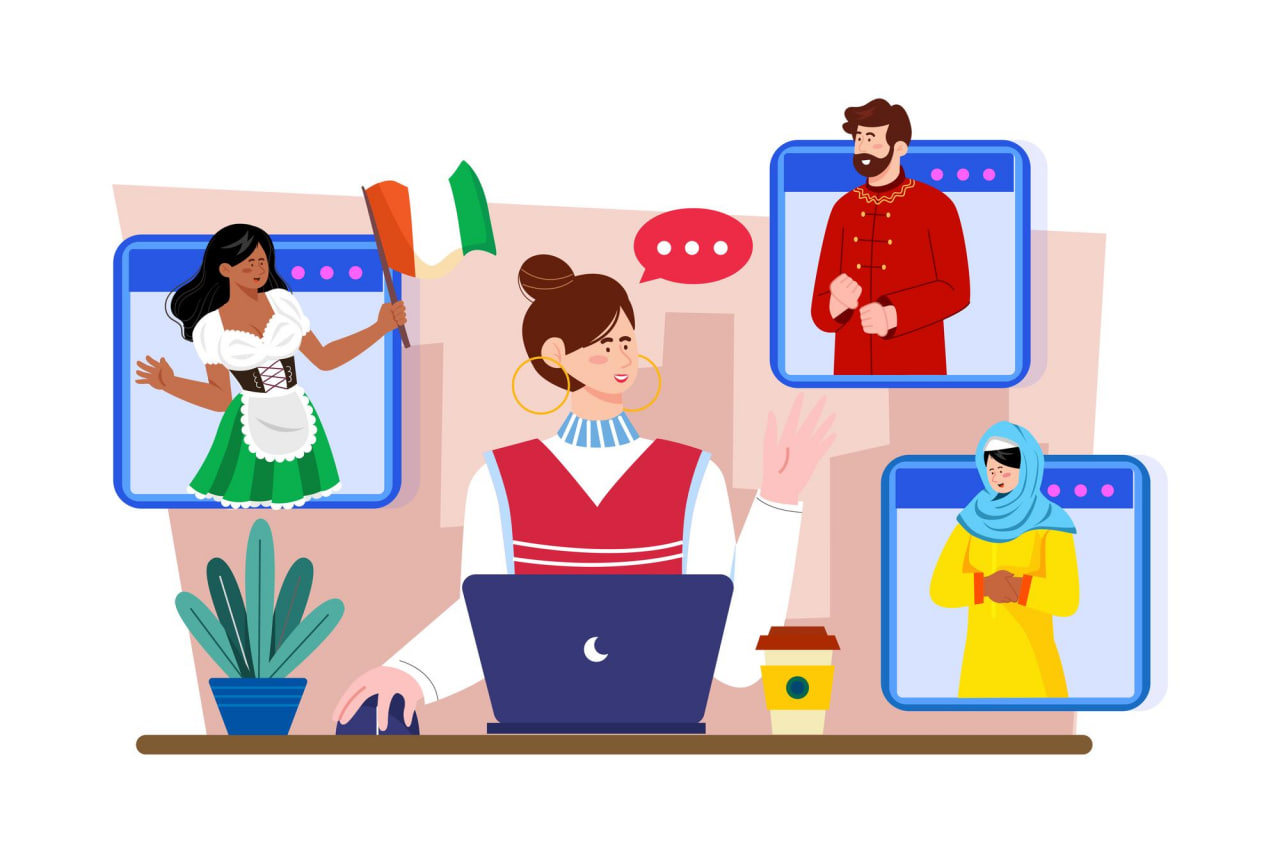YouTube is one of the most popular and diverse platforms on the internet, with billions of users from all over the world watching and creating content in various languages. In today’s globalized world, YouTube has emerged as a powerful platform for content creators to reach audiences across borders and languages. If you want to reach a wider audience and grow your channel, you need to consider translating and localizing your videos for different markets and cultures.
However, the process of translating and localizing YouTube videos involves more than just substituting words. It requires careful consideration of cultural nuances, linguistic variations, and technical details. While many aspects of translation and localization are well-discussed, several key points often go unnoticed.
In this article, we’ll shed light on some of the most underrated factors that play a crucial role in ensuring the success of translated and localized YouTube content.
What is Translation and Localization?
Translation is the process of converting text or speech from one language to another, while preserving the meaning and intent of the original message. Localization is the process of adapting content to suit the preferences and expectations of a specific audience, taking into account cultural, social, legal, and technical aspects.
For example, if you want to translate and localize a video from English to Spanish, you would not only change the language of the subtitles or voice-over, but also adjust the content to fit the context and norms of the Spanish-speaking viewers. This could include:
- Using local currency or units of measurement
- Adapting names or locations
- Avoiding regional slang or idioms
- Considering local laws or regulations
- Adjusting humor or tone
Why is Translation and Localization Important for YouTube Videos?
According to YouTube’s own data¹, over two-thirds of a creator’s audience watch time comes from outside of their home area. This means that there is a huge potential for reaching new viewers and subscribers by making your videos more accessible and appealing in other languages.
Some of the benefits of translating and localizing your YouTube videos are:
- Increased discoverability: Translated video titles and descriptions can show up in YouTube search results for viewers who speak those other languages. You can also use hashtags and keywords in different languages to optimize your SEO.
- Enhanced engagement: Viewers who can understand your content better are more likely to watch longer, like, comment, share, and subscribe to your channel. They are also more likely to trust your brand and buy your products or services.
- Improved user experience: Viewers who can enjoy your content in their preferred language and format are more likely to have a positive impression of your channel. They will appreciate your effort to cater to their needs and preferences, and feel more connected to your message.
Common Challenges in Translating and Localizing YouTube Videos
Translating and localizing YouTube videos can be a complex and time-consuming process, as it involves not only changing the language of the content, but also adapting it to the cultural and technical preferences of the target audience. Some of the common challenges in translating and localizing YouTube videos are:
- Choosing the right translation method: Depending on the type and purpose of the video, different translation methods may be more suitable or effective. For example, dubbing is more appropriate for certain genres, such as animation or comedy, or for certain markets, such as France or Italy, where dubbing is more common and expected.
- Adapting the content for cultural relevance: Translating the language of the video is not enough to make it appealing and understandable for the target audience. The content also needs to be localized, which means adjusting it to fit the context and norms of the target culture. This could include using local currency or units of measurement, adapting names or locations, avoiding regional slang or idioms, considering local laws or regulations, adjusting humor or tone, etc.
- Maintaining the quality and consistency of the translation: Translating and localizing videos involves multiple steps and people, such as transcribing, translating, editing, proofreading, testing, and publishing. Each step requires attention to detail and accuracy, as well as coordination and communication among the team members. Translators and localizers need to follow standards and guidelines, use tools and resources, and check their work for errors and inconsistencies. They also need to update their translations and localizations regularly, to reflect any changes or updates in the original content.
- Optimizing the video for the platform: YouTube has its own guidelines and features for translating and transcribing videos, such as activating subtitles, setting default languages, using auto-translate, translating video titles and descriptions, etc. Translators and localizers need to be familiar with these guidelines and features, and use them to optimize their videos for discoverability, accessibility, and user experience¹².
How to Translate and Localize YouTube Videos Effectively?
Translating and localizing YouTube videos can be challenging, especially if you don’t speak the target language or know the target culture well. However, there are some tools and best practices that can help you achieve better results.
Here are some tips on how to translate and localize YouTube videos effectively:
-
Cultural context is king: Translation goes beyond mere word conversion. Understanding the cultural context of the target audience is paramount. Phrases, idioms, and references that resonate in the source language might not have the same impact in the target culture. Being aware of cultural norms, sensitivities, and pop culture references is essential for delivering content that feels natural and relatable.
-
Adaptation of humor and wordplay: Humor doesn’t always translate directly. Puns, wordplay, and jokes that work in one language might fall flat or lose their essence when translated. Translators need to possess creative skills to adapt humor while maintaining the intended message. This might involve finding equivalent expressions or even creating new jokes that align with the cultural preferences of the target audience.
-
Linguistic diversity within the target language: Even within a single language, there can be significant linguistic variations. Regional accents, dialects, and vocabulary differences can impact the viewer’s understanding and engagement with the content. Successful localization involves selecting the most appropriate linguistic variant to effectively connect with the target audience.
-
Voiceover or subtitles - finding the balance: Choosing between voiceover and subtitles depends on the content and the preferences of the audience. While voiceovers might seem more immersive, subtitles can be more inclusive, allowing viewers to hear the original audio. Striking the right balance between these two options is essential to ensure that the translated content feels seamless and natural.
-
Maintaining video timing and lip sync: In video translation, maintaining lip sync and pacing is often a challenging task. The target language might have different sentence structures and lengths, potentially causing discrepancies in lip movements. Skilled translators and editors need to work together to ensure that the translated dialogue matches the original timing as closely as possible.
-
Navigating slang, abbreviations, and neologisms: Slang, abbreviations, and newly coined words are ever-present in online content, including YouTube videos. Staying current with these linguistic trends in both the source and target languages is crucial. Neglecting these nuances could make the translated content sound outdated or disconnected from the audience.
-
Metadata and SEO in the target language: For videos to reach a wider audience, effective metadata and SEO practices are essential. This involves not only translating titles and descriptions but also using relevant keywords that resonate with the target audience’s search habits. A deep understanding of the target language’s online landscape is necessary to optimize discoverability.
Underrated Points in Translation and Localization
Some of the underrated points in translation and localization are:
-
The importance of context and purpose in choosing the right words and expressions. Different languages have different ways of conveying meaning, tone, and emotion, depending on the situation and the intended effect. For example, a word that is polite in one context may be rude in another, or a word that is humorous in one culture may be offensive in another. Translators and localizers need to consider the context and purpose of the original content, as well as the expectations and preferences of the target audience, when selecting the appropriate language and style.
-
The challenge of translating humor and sarcasm. Humor and sarcasm are often based on cultural references, wordplay, irony, or exaggeration, which may not translate well or at all into another language. Translators and localizers need to be creative and flexible in finding ways to preserve or adapt the humor and sarcasm of the original content, or replace them with something else that is suitable for the target audience. Sometimes, humor and sarcasm may need to be omitted or toned down, if they are too risky or irrelevant for the target market.
-
The need for consistency and quality control. Translating and localizing content involves multiple steps and people, such as transcribing, translating, editing, proofreading, testing, and publishing. Each step requires attention to detail and accuracy, as well as coordination and communication among the team members. Translators and localizers need to follow standards and guidelines, use tools and resources, and check their work for errors and inconsistencies. They also need to update their translations and localizations regularly, to reflect any changes or updates in the original content.
Conclusion
The journey of translating and localizing YouTube videos is intricate and multifaceted. Beyond the literal conversion of words, it requires an appreciation for cultural diversity, linguistic subtleties, and technical challenges. By acknowledging and addressing these often overlooked aspects, content creators and translators can truly bridge the gap between languages, fostering genuine connections with audiences around the world.
At Go Global , we’re here to support you on this exciting path. With our AI-powered video localization and publishing services, you can seamlessly translate your content and open doors to new horizons. Start captivating global audiences today and let your creativity shine across borders.
Translate, Engage, and Thrive - Empower your content with Go Global!




Use the share button below if you liked it.